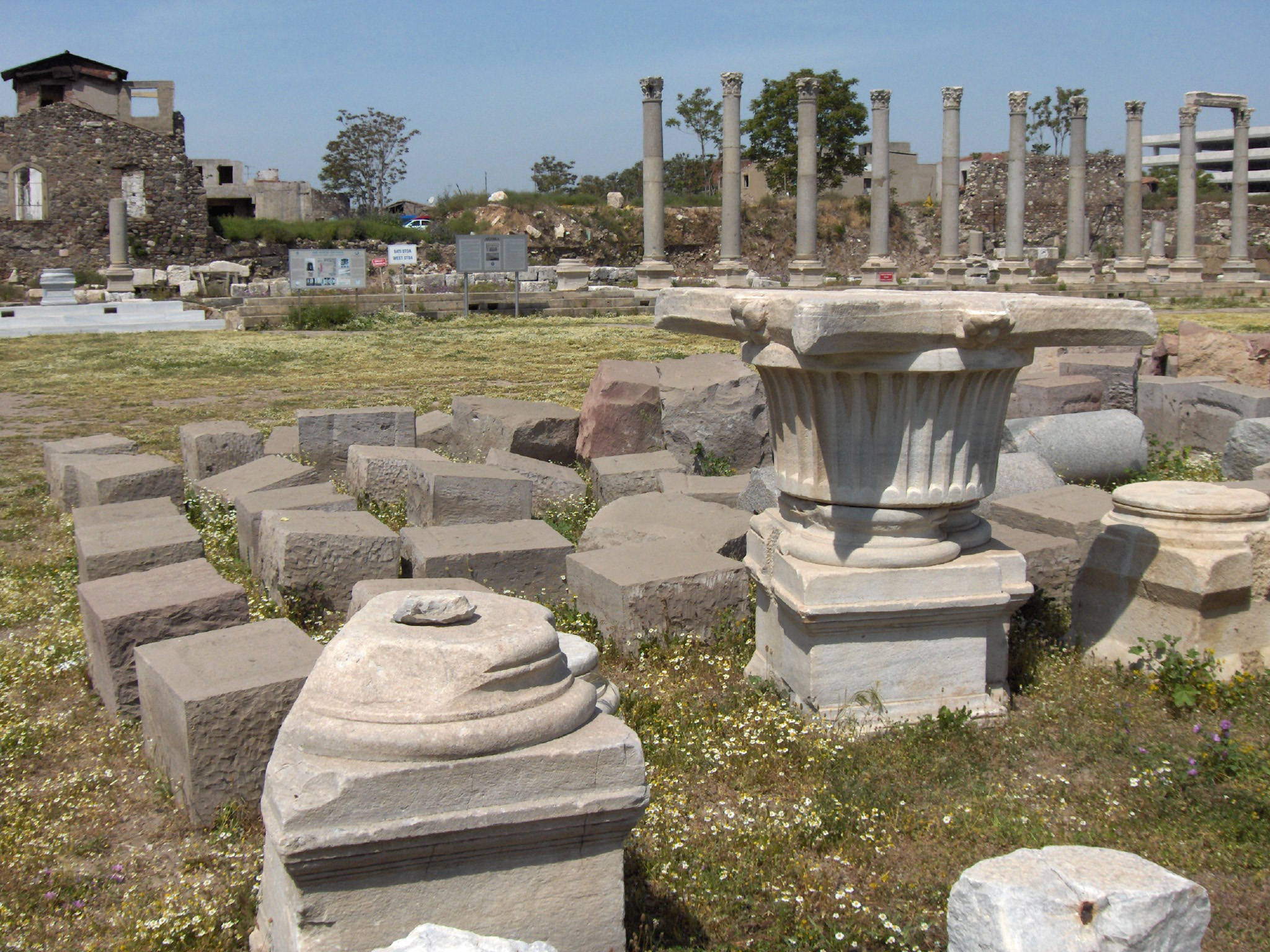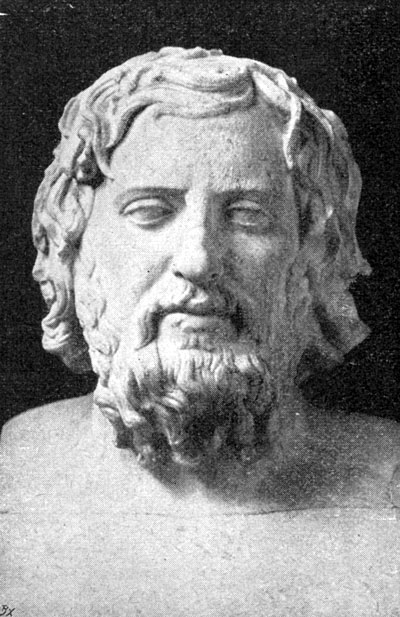|
Gambrion
Gambrium or Gambrion ( grc, Γάμβριον and Γάμβρειον), also Gambreium or Gambreion (Γάμβρειον), was a town of ancient Aeolis and of Mysia, quite close to Pergamum. Its location is near Kınık and Bergama in İzmir province, in the Aegean Region of Turkey. It is on a hill named Hisarlık in the Bakırçay (ancient Kaikos) valley and very close to modern town of Poyracık. Gambrium is first mentioned in the '' Hellenica'' of Xenophon which gives knowledge about the region in 399 BCE. At that time the ruler of the city, as well as of Palaegambrium, was Gorgion, son of Gongylos.Xenophon, ''Anabasis'', 7.8.8-17. There was a star with twelve rays on the electrum Electrum is a naturally occurring alloy of gold and silver, with trace amounts of copper and other metals. Its color ranges from pale to bright yellow, depending on the proportions of gold and silver. It has been produced artificially, and ... coins of Gambrium. References Externa ... [...More Info...] [...Related Items...] OR: [Wikipedia] [Google] [Baidu] |
Poyracık
Poyracık is a town in Kınık district of İzmir Province, Turkey. At it is very close to Kınık. Distance to İzmir is about . The population of the town is 5760 as of 2011. Poyracık is an old town and its history can be traced back to Gambrion of the 4th century BC. It was an important settlement during Pergamon state. In the middle age it became a part of Byzantine Empire . Sasa bey (a Turkmen bey of Aydınoğlu beylik) captured the town and finally it became a part of the Ottoman Empire The Ottoman Empire, * ; is an archaic version. The definite article forms and were synonymous * and el, Оθωμανική Αυτοκρατορία, Othōmanikē Avtokratoria, label=none * info page on book at Martin Luther University) .... In 1937 it was declared a seat of township. References ...[...More Info...] [...Related Items...] OR: [Wikipedia] [Google] [Baidu] |
Ancient Aeolis
Aeolis (; grc, Αἰολίς, Aiolís), or Aeolia (; grc, Αἰολία, Aiolía, link=no), was an area that comprised the west and northwestern region of Asia Minor (modern-day Turkey), mostly along the coast, and also several offshore islands (particularly Lesbos), where the Aeolian Greek city-states were located. Aeolis incorporated the southern parts of Mysia, and is bounded by it to the north, Ionia to the south, and Lydia to the east. Geography Aeolis was an ancient district on the western coast of Asia Minor. It extended along the Aegean Sea from the entrance of the Hellespont (now the Dardanelles) south to the Hermus River (now the Gediz River). It was named for the Aeolians, some of whom migrated there from Greece before 1000 BC. Aeolis was, however, an ethnological and linguistic enclave rather than a geographical unit. The district often was considered part of the larger northwest region of Mysia. History According to Homer's ''Odyssey'', Odysseus, after his sta ... [...More Info...] [...Related Items...] OR: [Wikipedia] [Google] [Baidu] |
Palaegambrium
Palaegambrium or Palaigambrion ( grc, Παλαιγάμβριον, 'Old Gambrium') was a town of ancient Aeolis, close to Pergamum. Palaegambrium is first mentioned in the ''Hellenica'' of Xenophon which gives knowledge about the region in 399 BCE. At that time the ruler of the city, as well as of Gambrium, was Gorgion, son of Gongylos.Xenophon, ''Anabasis Anabasis (from Greek ''ana'' = "upward", ''bainein'' = "to step or march") is an expedition from a coastline into the interior of a country. Anabase and Anabasis may also refer to: History * ''Anabasis Alexandri'' (''Anabasis of Alexander''), a ...'', 7.8.8-17. Its site is unlocated. References Populated places in ancient Aeolis Former populated places in Turkey Lost ancient cities and towns {{AncientAeolis-geo-stub ... [...More Info...] [...Related Items...] OR: [Wikipedia] [Google] [Baidu] |
Former Populated Places In Turkey
A former is an object, such as a template, gauge or cutting die, which is used to form something such as a boat's hull. Typically, a former gives shape to a structure that may have complex curvature. A former may become an integral part of the finished structure, as in an aircraft fuselage, or it may be removable, being using in the construction process and then discarded or re-used. Aircraft formers Formers are used in the construction of aircraft fuselage, of which a typical fuselage has a series from the nose to the empennage, typically perpendicular to the longitudinal axis of the aircraft. The primary purpose of formers is to establish the shape of the fuselage and reduce the column length of stringers to prevent instability. Formers are typically attached to longerons, which support the skin of the aircraft. The "former-and-longeron" technique (also called stations and stringers) was adopted from boat construction, and was typical of light aircraft built until the ad ... [...More Info...] [...Related Items...] OR: [Wikipedia] [Google] [Baidu] |
Populated Places In Ancient Aeolis
Population typically refers to the number of people in a single area, whether it be a city or town, region, country, continent, or the world. Governments typically quantify the size of the resident population within their jurisdiction using a census, a process of collecting, analysing, compiling, and publishing data regarding a population. Perspectives of various disciplines Social sciences In sociology and population geography, population refers to a group of human beings with some predefined criterion in common, such as location, Race (human categorization), race, ethnicity, nationality, or religion. Demography is a social science which entails the statistical study of populations. Ecology In ecology, a population is a group of organisms of the same species who inhabit the same particular geographical area and are capable of Sexual reproduction, interbreeding. The area of a sexual population is the area where interbreeding, inter-breeding is possible between any pai ... [...More Info...] [...Related Items...] OR: [Wikipedia] [Google] [Baidu] |
Populated Places In Ancient Mysia
Population typically refers to the number of people in a single area, whether it be a city or town, region, country, continent, or the world. Governments typically quantify the size of the resident population within their jurisdiction using a census, a process of collecting, analysing, compiling, and publishing data regarding a population. Perspectives of various disciplines Social sciences In sociology and population geography, population refers to a group of human beings with some predefined criterion in common, such as location, race, ethnicity, nationality, or religion. Demography is a social science which entails the statistical study of populations. Ecology In ecology, a population is a group of organisms of the same species who inhabit the same particular geographical area and are capable of interbreeding. The area of a sexual population is the area where inter-breeding is possible between any pair within the area and more probable than cross-breeding with ind ... [...More Info...] [...Related Items...] OR: [Wikipedia] [Google] [Baidu] |
Ancient Greek Archaeological Sites In Turkey
Ancient history is a time period from the beginning of writing and recorded human history to as far as late antiquity. The span of recorded history is roughly 5,000 years, beginning with the Sumerian cuneiform script. Ancient history covers all continents inhabited by humans in the period 3000 BCAD 500. The three-age system periodizes ancient history into the Stone Age, the Bronze Age, and the Iron Age, with recorded history generally considered to begin with the Bronze Age. The start and end of the three ages varies between world regions. In many regions the Bronze Age is generally considered to begin a few centuries prior to 3000 BC, while the end of the Iron Age varies from the early first millennium BC in some regions to the late first millennium AD in others. During the time period of ancient history, the world population was already exponentially increasing due to the Neolithic Revolution, which was in full progress. While in 10,000 BC, the world population stood a ... [...More Info...] [...Related Items...] OR: [Wikipedia] [Google] [Baidu] |
Archaeological Sites In The Aegean Region
Archaeology or archeology is the scientific study of human activity through the recovery and analysis of material culture. The archaeological record consists of artifacts, architecture, biofacts or ecofacts, sites, and cultural landscapes. Archaeology can be considered both a social science and a branch of the humanities. It is usually considered an independent academic discipline, but may also be classified as part of anthropology (in North America – the four-field approach), history or geography. Archaeologists study human prehistory and history, from the development of the first stone tools at Lomekwi in East Africa 3.3 million years ago up until recent decades. Archaeology is distinct from palaeontology, which is the study of fossil remains. Archaeology is particularly important for learning about prehistoric societies, for which, by definition, there are no written records. Prehistory includes over 99% of the human past, from the Paleolithic until the advent of ... [...More Info...] [...Related Items...] OR: [Wikipedia] [Google] [Baidu] |
Electrum
Electrum is a naturally occurring alloy of gold and silver, with trace amounts of copper and other metals. Its color ranges from pale to bright yellow, depending on the proportions of gold and silver. It has been produced artificially, and is also known as "green gold".Emsley, John (2003Nature's building blocks: an A–Z guide to the elements Oxford University Press. . p. 168 Electrum was used as early as the third millennium BC in Old Kingdom of Egypt, sometimes as an exterior coating to the pyramidions atop ancient Egyptian pyramids and obelisks. It was also used in the making of ancient drinking vessels. The first known metal coins made were of electrum, dating back to the end of the 7th century or the beginning of the 6th century BC. For several decades, the medals awarded with the Nobel Prize have been made of gold-plated green gold. Etymology The name "electrum" is the Latinized form of the Greek word ἤλεκτρον (''ḗlektron''), mentioned in the ''Odyssey' ... [...More Info...] [...Related Items...] OR: [Wikipedia] [Google] [Baidu] |
Anabasis (Xenophon)
''Anabasis'' (; grc-gre, Ἀνάβασις ; an "expedition up from") is the most famous work of the Ancient Greek professional soldier and writer Xenophon. It narrates the expedition of a large army of Greek mercenaries hired by Cyrus the Younger to help him seize the throne of Persia from his brother, Artaxerxes II, in 401 BC. The seven books making up the ''Anabasis'' were composed circa 370 BC. Though as an Ancient Greek vocabulary word, ''ᾰ̓νᾰ́βᾰσῐς'' means "embarkation", "ascent" or "mounting up", the title ''Anabasis'' is rendered in translation as ''The March Up Country'' or as ''The March of the Ten Thousand''. The narration of the army's journey across Asia Minor and Mesopotamia is Xenophon's best known work, and "one of the great adventures in human history". Authorship Xenophon, in his '' Hellenica'', did not cover the retreat of Cyrus but instead referred the reader to the ''Anabasis'' by "Themistogenes of Syracuse"—the tenth-century Suda also de ... [...More Info...] [...Related Items...] OR: [Wikipedia] [Google] [Baidu] |
Gongylos
Gongylos ( grc, Γογγύλος), from Eretria in Euboea, was a 5th-century Greek statesman who served as an intermediary between the Spartans and Xerxes I of the Achaemenid Empire, and was a supporter of the latter. After the defeat of the Second Persian invasion of Greece in 479 BCE, Gongylos was forced to flee and take refuge in the Achaemenid Empire. There, Xerxes granted him the territory of Pergamon in Asia Minor from circa 470-460 BCE as a reward. His descendants ruled over the city until at least 400 BCE, forming the Gongylid dynasty of satraps. Gongylos was one of the several Greek aristocrats who took refuge in the Achaemenid Empire following reversals at home, other famous ones being Hippias (tyrant), Hippias, Demaratos, and Themistocles. In general, those were generously welcomed by the Achaemenid kings, and received land grants to support them, and ruled over various cities of Asia Minor. According to Xenophon (''Anabasis'', 7.8.8-17), when he arrived in Mysia ... [...More Info...] [...Related Items...] OR: [Wikipedia] [Google] [Baidu] |





.jpg)
.jpg)
